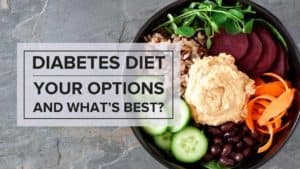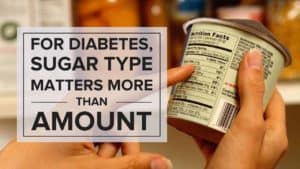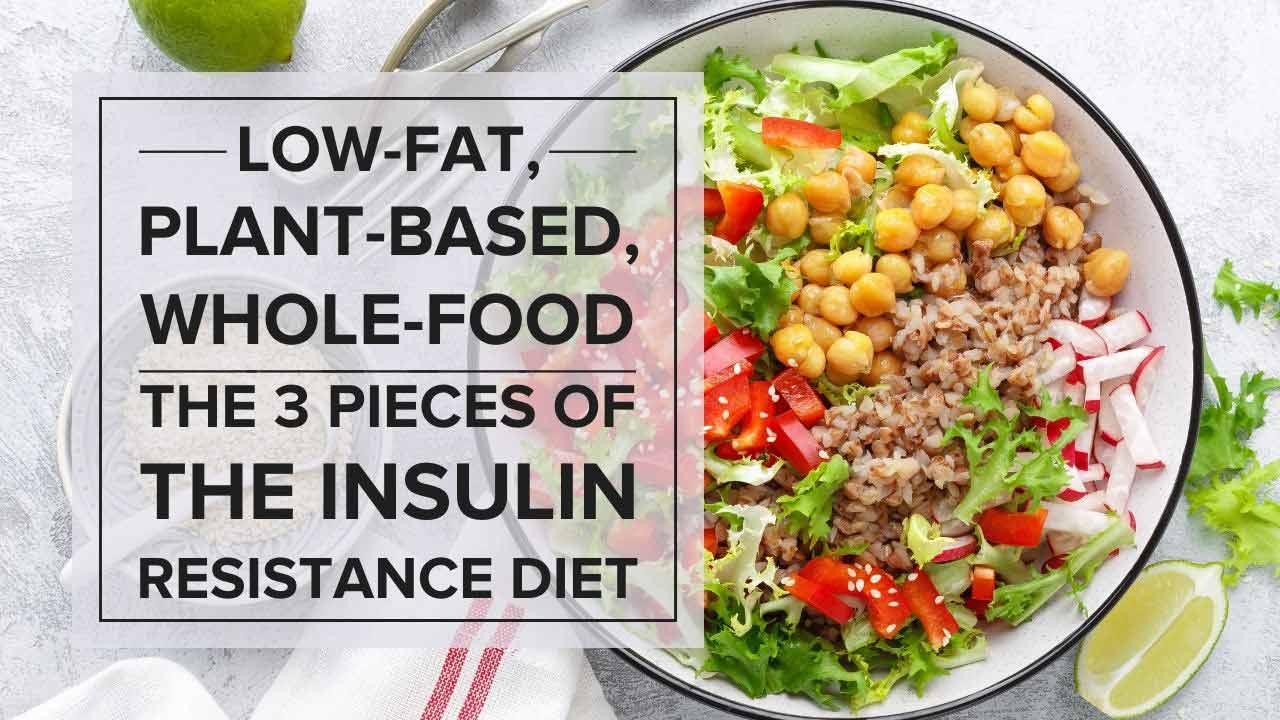
The insulin resistance diet is a three-pronged approach to completely reversing insulin resistance, which includes low-fat, plant-based, whole foods. It sounds simple, but the results are incredible!
This blog post will discuss these three pillars in detail, along with answering some common questions about insulin resistance and how to reverse it.
So Wait, What Is Insulin Resistance Again?
Insulin resistance is the buildup of dietary fat in cells that are not meant to store it. This causes your cells to ignore glucose in your blood as they try to burn this excess fat, causing your blood glucose (blood sugar) levels to rise.
This causes the pancreas to overwork itself producing even more insulin, which results in increased hunger and fat storage. Over time this excess of dietary fat can lead to metabolic diseases like type 2 diabetes, hypertension, high cholesterol levels, and cardiovascular disease.
Diabetes: A Disease You Might Recognize
Insulin resistance is the underlying condition behind type 2 diabetes.
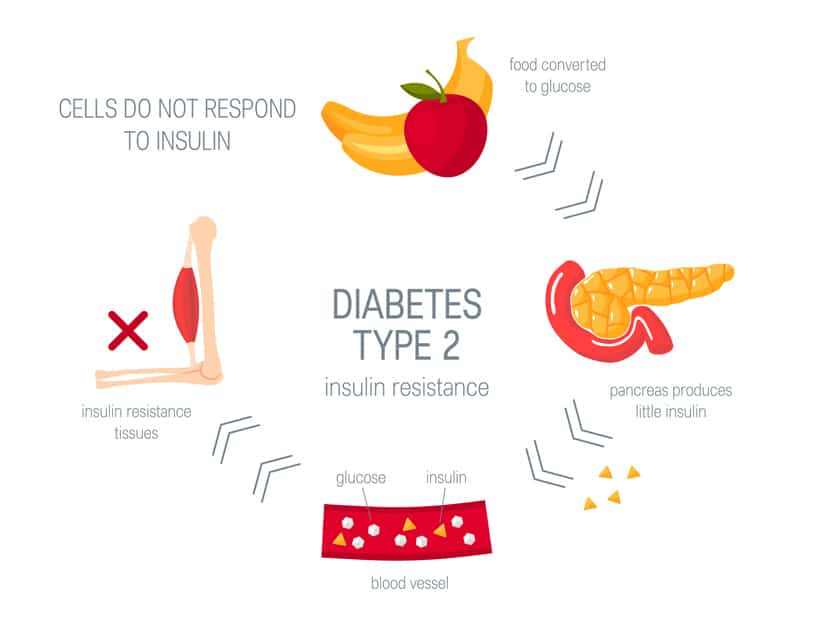
Type 2 diabetes is a disease that results when your body cannot use insulin properly to move glucose out of your blood, causing high levels of it in the blood. This causes sugar (glucose) to build up in your blood instead of being used for energy by cells or stored as fat for later use.
And in fact, the main test that is used to test for diabetes (the Oral Glucose Tolerance Test, or OGTT) is essentially testing for insulin resistance.
The one exception is in the case of insulin dependent diabetes, such as type 1 diabetes, type 1.5 diabetes and insulin dependant type 2 diabetes, in which your body lacks the ability to produce insulin sufficient quantities of insulin.
In this article, we will focus on the connection between reversing insulin resistance and reversing type 2 diabetes where there’s still plenty of insulin being produced.
So Why Should We Reverse Insulin Resistance?
Well, the answer to this is clear!
Insulin resistance is the cause of diabetes along with other complications like heart disease, weight gain, and obesity. So reversing insulin resistance is a great way to prevent or reverse these conditions!
But there are other benefits too: improved energy levels, better athletic recovery, improved vision, better sleep cycles...the list goes on!
In short -- if you reverse insulin resistance, you reverse type 2 diabetes.
The Causes of Insulin Resistance
There are two major causes of insulin resistance.
The first is a combination of lifestyle factors like stress, lack of exercise, lack of sleep, and smoking. And while you can fortunately use exercise as a powerful tool to fight insulin resistance (like we explain in this article), these lifestyle factors are still somewhat secondary to the main cause of insulin resistance.
The second cause of insulin resistance, and the main one, is your diet.
It's no coincidence that millions of Americans suffer from type 2 diabetes when the Standard American Diet (SAD diet) contains a high amount of dietary fat along with processed foods and added sugars, which all combine to cause insulin resistance.
This is the main reason that we recommend eating a low-fat, plant-based, whole-food diet to reverse insulin resistance -- it has been proven time and time again in clinical trials!
The Insulin Resistance Diet: Reverse Insulin Resistance Quick!
The Mastering Diabetes insulin resistance diet was designed over the course of decades to provide a few things.
First of all, it's a low-fat, plant-based, whole-food diet which means that it fights the main cause of insulin resistance.
Second, it cuts out processed foods and added sugars, which are secondary causes of insulin resistance, but also cause other problems like excess cravings, inflammation, and elevated blood sugar levels.
And finally, when combined with exercise -- which we also recommend -- you can expect quick results.
We've seen people reverse their diabetes symptoms in as little as a few weeks! And it's not just reversing insulin resistance that we focus on with this insulin resistance diet.
This diet was created by people with diabetes for people with diabetes to help not only conquer diabetes, but offer side effects like healthy weight loss, more energy, and more easily controlled blood glucose levels.
Because if you're fighting one lifestyle disease, there's no reason to make changes if they don't result in a fulfilling, healthy lifestyle.
So without further ado, let's go into the pillars of the Mastering Diabetes insulin resistance diet!
Pillar 1: Low-Fat
The first part of this diet is to cut the fat.
The reason for this is simple -- diets that are high in dietary fat have been shown time and time again to contribute directly to insulin resistance!
Which makes sense. After all, insulin resistance by definition is the buildup of dietary fat in cells that aren’t meant to store it.
That doesn’t mean that you should have no fat in your diet! Your body definitely needs some of these crucial compounds to function, but you can get them in small quantities from natural sources like nuts, seeds, and some hearty fruits and vegetables.
High In Natural Carbohydrates
So what's in this diet? Well, tons of natural carbohydrates! We're talking about things like intact whole grains, brown rice, beans, fruits, starchy and non-starchy vegetables... there's a good chance if it's a whole plant, it’s a food that’s good to go!
These natural carbohydrates are healthier for people with insulin resistance because they are high in fiber, which is great at slowing down the absorption of carbohydrates into your bloodstream.
Slowly absorbing carbs helps keep blood glucose levels more balanced and reduces cravings that might otherwise cause you to overeat after a meal!
I Thought Carbohydrates Spiked Blood Sugar Levels...
You're not entirely wrong, but there are some misconceptions here.
It's true that when you consume glucose, the byproduct of all carbohydrates, your blood glucose level will rise. That’s not a bad thing, it’s actually a normal aspect of human biology. But not all carbohydrates are created equal.
Simple carbohydrates, like sugary fruit juice, table sugar (sucrose), corn syrup, and processed foods like white rice, white bread, and other similar products are quickly absorbed into the bloodstream which causes an abnormal spike in glucose levels.
Complex carbohydrates like intact whole grains, beans/legumes, potatoes/sweet potatoes... these carbs also raise your blood sugar levels but they do so much more slowly than their simple carbohydrate counterparts!
And the rise is not beyond normal human biology. This happens because the fiber and nutrients in these complex carbohydrates slows down digestion and absorption.
The end result is a much more gradual increase in insulin levels, which gives your body's metabolism time to use up excess glucose as energy.
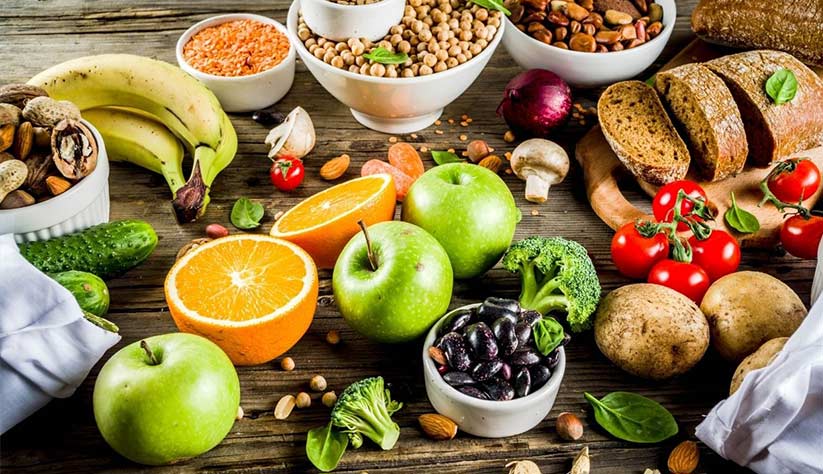
More energy for you, and less insulin resistance? Count me in!
But What About Keto and Low Carb Diets?
Keto and other high-fat, low-carb diets are often prescribed for people with diabetes and insulin resistance, and this is a terrible idea.
Yes, low-carb diets lead to losing weight and an initial dip in your blood sugar levels. But they absolutely crush your insulin sensitivity and lead to a spike in insulin resistance.
Basically, you're creating a ticking time bomb that will go off the next time you're eating foods high in carbohyrate energy, inclding whole foods like fruit, sweet potatoes, beans and intact whole grains.
If you're looking to create long-term results, it's just not the way to go.
What About Protein?
Protein is an important part of any diet, especially if you exercise (an important part of increasing your insulin sensitivity), but we have two caveats for eating protein.
First, we recommend that it doesn't come at the expense of also eating a low-carb diet. The vast majority of your energy should come from natural carbohydrates, meaning upwards of 80%. Protein and healthy fats should make up the remaining percentage.
And second, we recommend avoiding meat-sources of protein for reasons we'll explain below!
Pillar 2: Plant-Based
The second pillar of the Mastering Diabetes diet is eating a heavily (or entirely) plant-based diet.
This is the hardest part for a lot of people, so we'll break down why this is a great idea below.
What Your Body Wants
The first reason to eat plant-based is that you're simply eating in a way that's more natural for your body.
If you look at the food groups that humans have thrived on for thousands of years, we've always leaned heavily towards fruit and vegetables! So this is definitely what our bodies are used to eating and seeing as how insulin resistance pretty much started when people began focusing less on fruits and vegetables, it just makes sense to try to bring that balance back.
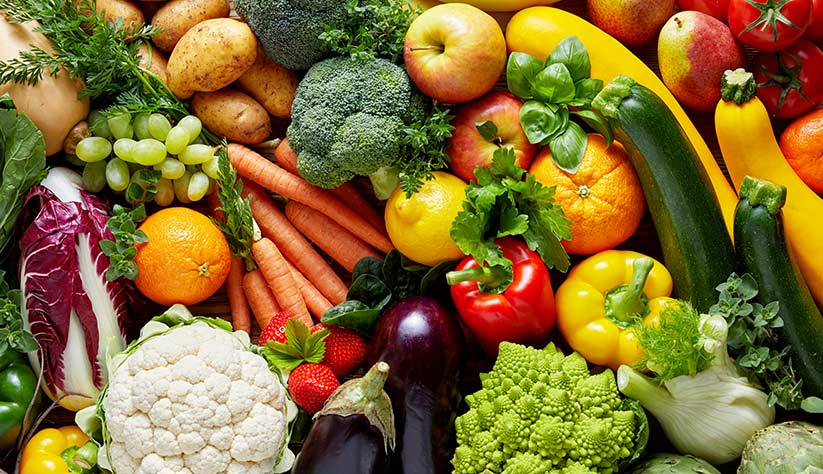
High Fiber (And Other Nutrients!)
The second reason here is that plants are high-fiber foods absolutely packed with heart-healthy compounds. We're talking antioxidants, minerals like magnesium and potassium, and all of the vital vitamins that your body needs to function.
If you're eating plants in their natural form, it doesn't matter whether it's a fruit, whole grain, starchy or non-starchy vegetables, or any of the other types of plants. You're getting crucial nutrients.
The Risks of Meat
On the flip side, the other reason we recommend eating plant-based foods has to do with the risks of eating too much meat.
Meat, especially processed meats like bacon or sausage, are high in saturated fat and cholesterol which can lead to heart disease over time.
The other risk is that they're often full of harmful chemicals used during processing (especially if it's cheap factory-farmed meat ) and even pesticides from the animals themselves.
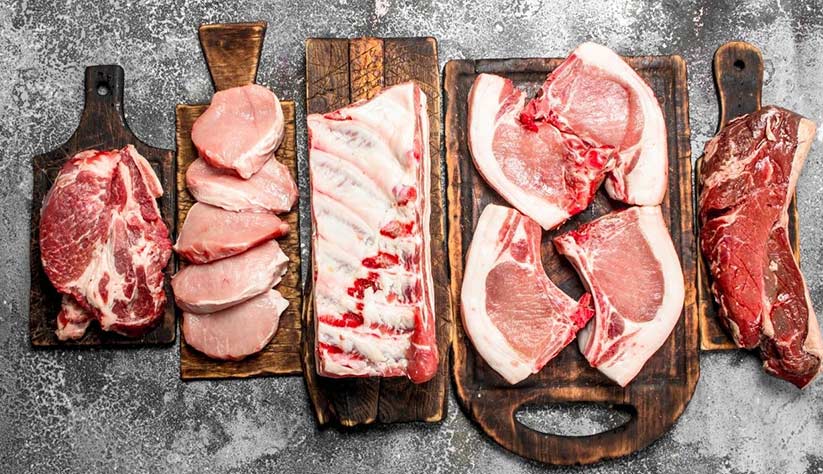
Not only this but meats are actually classified as Group 1 and Group 2 carcinogens, meaning they directly increase your risk of cancer.
It's just not worth the risk.
Pillar 3: Whole Food
The third part of the Mastering Diabetes diet is a focus on whole foods. And no, we're not talking about the grocery store! We're talking about foods that are as close to their natural state as possible, without added sugars or preservatives.
The Problem With Processed Food
The problem with most processed foods is that they've had so many nutrients stripped away that they lose most of their original nutritional value. Add in the fact that the lost nutrients are artificially added back in with preservatives and flavorings to make them more delicious, and you start to see that we might not even be consuming food anymore.
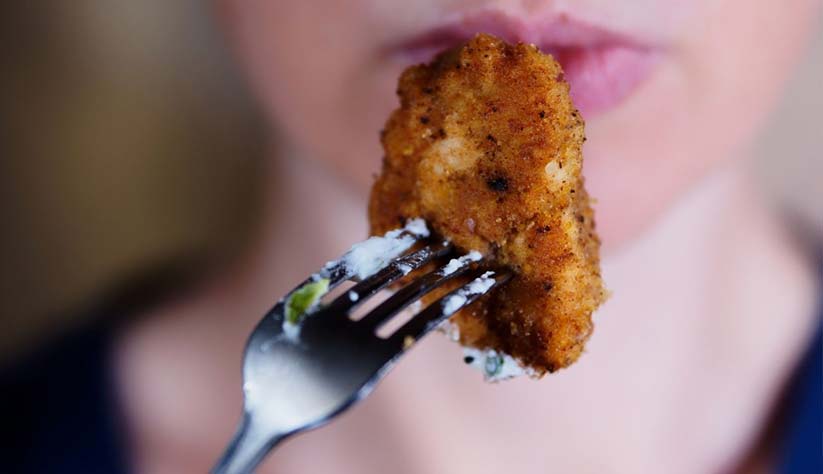
If a snack or a candy bar from the grocery store tastes too good to be true, it probably is.
Examples of Whole Foods
Millet, brown rice, chickpeas, fresh vegetables, fresh fruit, fresh green beans and legumes -- these are all examples of whole foods.
On the other hand, processed pasta, white rice, white bread, potato chips, canned fruit or sugary fruit juices, candied nuts, baked beans -- processed. Make sense?
Whole Food Doesn't Mean Lame, or Super Expensive
But that doesn't mean that a healthy diet that'll keep your blood sugar under control, support weight loss, and increase your insulin sensitivity can't be delicious and affordable!
In fact, once you learn how to shop and prepare green light foods, these meals can actually be cheaper and more delicious than what you might have been making before.
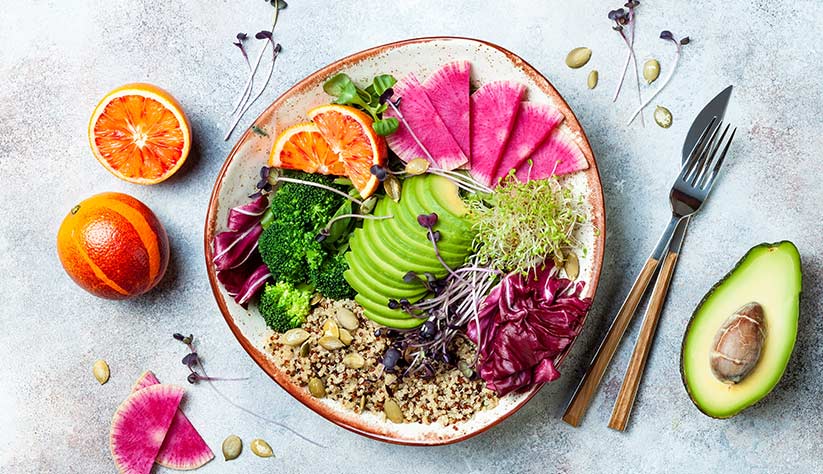
This is true for two reasons. First, most vegetables (if you know where to shop!) are vastly cheaper to produce than meat, and those savings pass on to you!
And the second, for flavor, is because once your body takes a break from processed and hyper-palatable foods, it starts to appreciate more subtle flavors. You'll be surprised how tasty fresh fruit can be after a few weeks of plant-based meals!
Green Light, Yellow Light, Red Light Foods
We know that managing insulin resistance, weight loss, blood sugar, and your insulin sensitivity, all while trying to make sense of high-carb, low-carb, whole wheat, whole food, etc. can be daunting!
That's why we've put together a set of simple guidelines that we call our green light, yellow light, and red light foods. This very simple reference puts all foods into a simple, easy-to-understand guide that you can use any time you're shopping or making dinner!
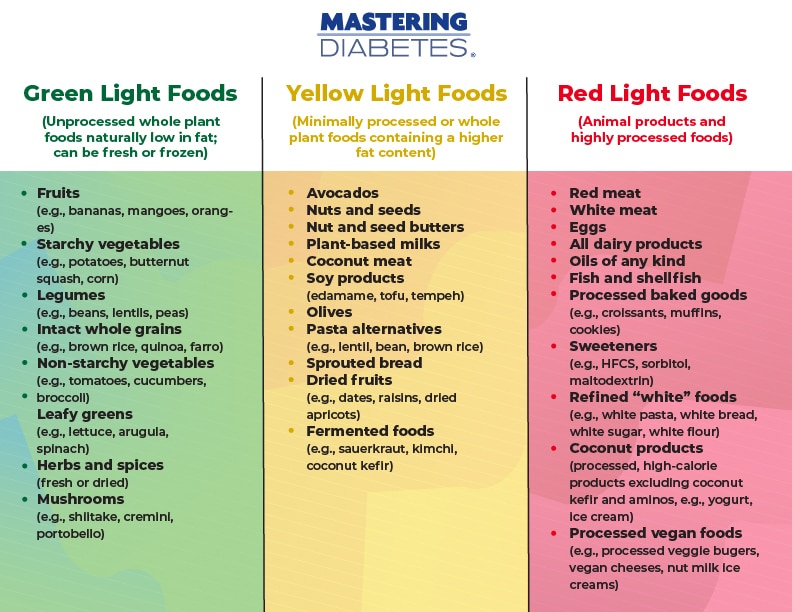
Learn from the Experts
And again, we know that transforming your life if you're living with diabetes can be a huge challenge! After all, you're trying to manage your blood sugar all while balancing weight loss, insulin resistance, heart-healthy choices, and oh, live a whole life!
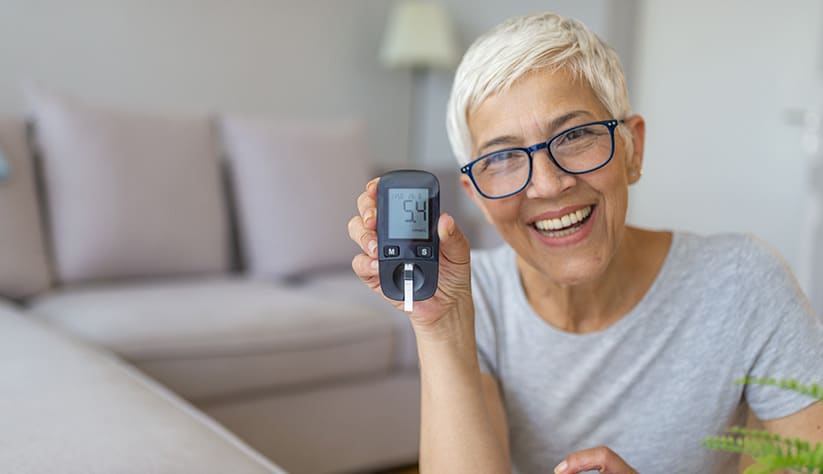
That's why we have a dedicated team of coaches, who have helped people just like you overcome insulin resistance, reverse diabetes, reach their ideal body weight, and transform their lives simply through exercise, intermittent fasting, and the right diet.
There's a reason so many people are sharing their "A1c Miracle".
Will you be next?
Lower Your A1c and Get to Your Ideal Body Weight ... Guaranteed
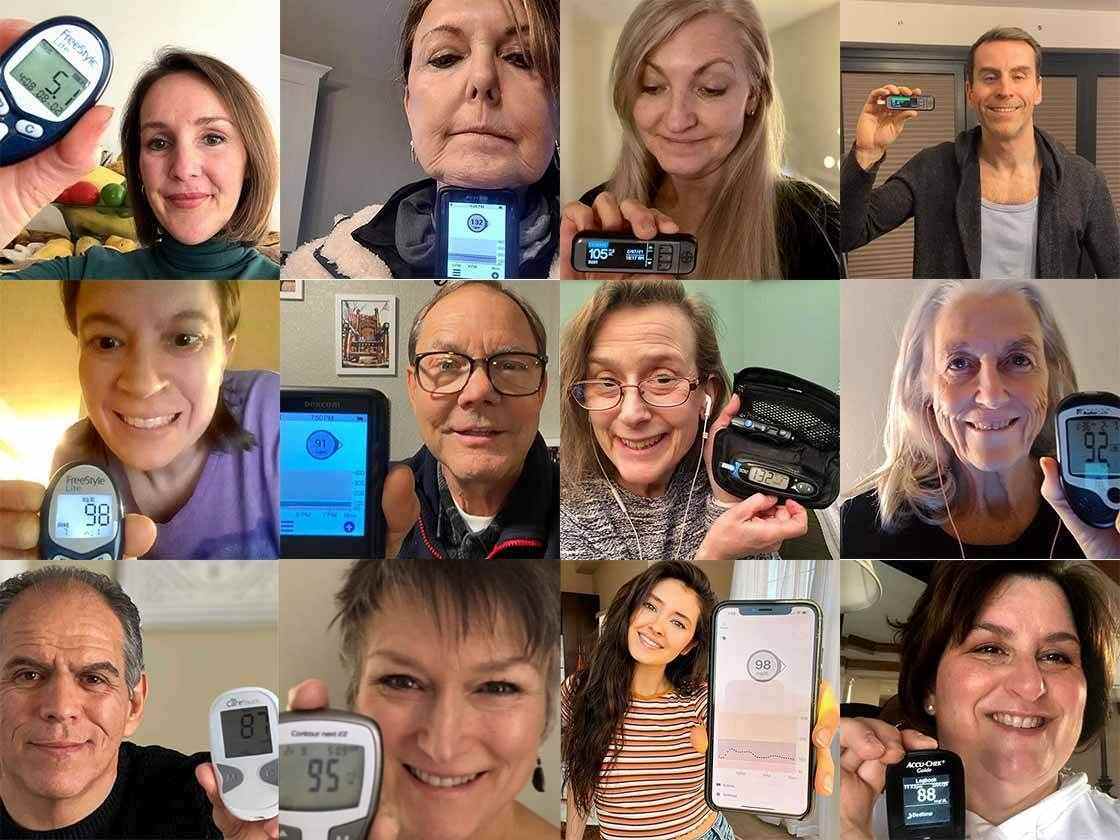
Your results are guaranteed. Join more than 10,000 ecstatic members today
Personalized coaching puts you in immediate control of your diabetes health, helps you gain energy, improves your quality of life, and reduces or eliminates your meds.


